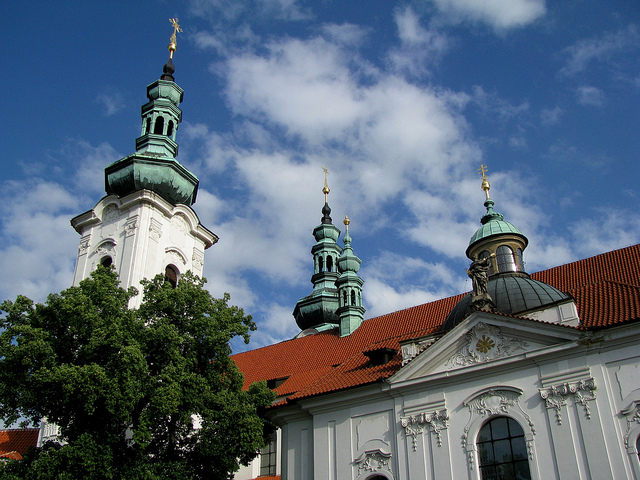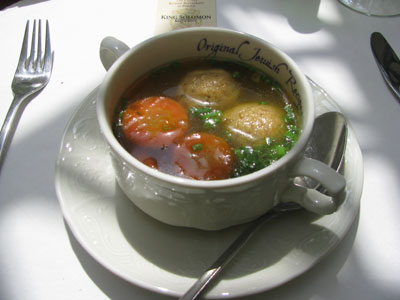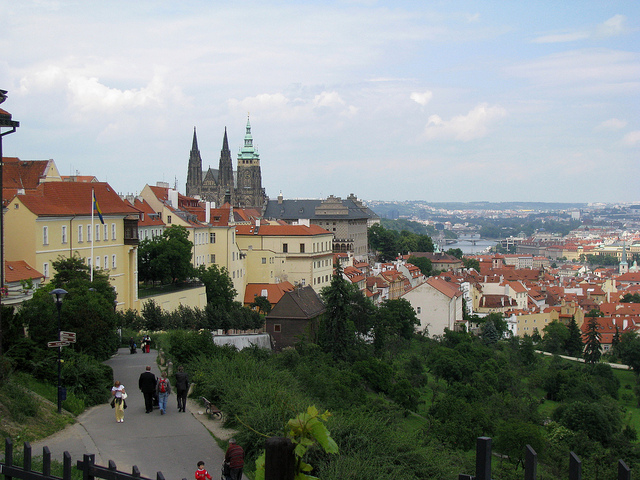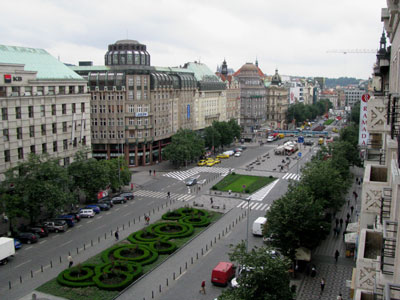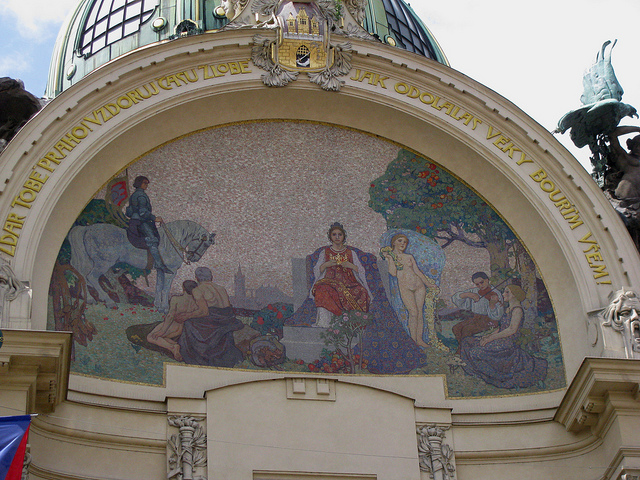At the end of my delicious lunch at La Rotonde, the Art Deco restaurant at the Radisson Blu Alcron Hotel, my personal tour guide for my walking tour of Prague came to pick me up. Petra Bedlasova is a historian, artist and photographer, and she is also one of the expert guides for Prague Walks, one of Prague’s most well-known tour guiding companies.

The historic Lucerna shopping arcade
Just steps from the hotel we entered one of the local landmarks just off Wenceslas Square: the Lucerna Palace is a passage that connects Vodickova and Štepánská streets, a true entertainment complex that houses many retail stores, restaurants, a movie theatre, a music bar and the prestigious Lucerna Grand Hall, one of Prague’s most famous concert halls. The complex was built between 1907 and 1921 and the first part of the arcade was opened in 1907. Opened in 1909, the Lucerna Cinema was the first permanent cinema in Bohemia, and held the screening of the first talking movie in 1929. Various Art Nouveau and Art Deco details adorn this complex, and one of the most visually stunning details is an upside down horse by Czech sculptor David Cerný. It has been hanging from the building’s glass-covered dome since 1999.

An upside-down horse hangs from the ceiling at the Lucerna
We stepped out of the building on the west side and continued through another passageway towards a small public park called the “Franciscan Gardens”, a secluded oasis in the middle of the city which feature a rose garden where we stopped to look at a very tall Gothic cathedral. Petra explained we were looking at the Church of Our Lady of the Snows. The church was planned in the 14th century and was never completed, and at 34 metres, its vaulted ceiling is the highest in Prague, even higher than that of famous St. Vitus Cathedral. Exiting from the rose garden we stepped into the church and I was impressed by the enormous altar, at 29 metres the highest in the city.

The Church of Our Lady of the Snows
Today this church is still the heart of a Franciscan monastery, which opened in the 1990s after having been shut down by the Communist regime in 1950. A few steps further we went into the monastery, and in one of the monastery’s arcaded walkways an exhibition of sculptures was being set up. The life-size sculptures were quirky depictions of human scenes and I snapped a few pictures of them before we got kicked out.

One of the quirky sculptures
Walking further west we stopped at the Palac Adria, a stunning example of European Art Deco. Built originally in 1923 and 1924 for a major insurance company, its inside features a passage that connects two major streets. The floor mosaics, the brass store windows and doors, the brass chandeliers and the wall sculptures are great samples of high Art Deco architectural details. After being renovated in 1996 and 1997, the building today holds apartments, offices, a theatre club, a gallery and a restaurant, and the façade showcases the rondo-cubist style.

Impressive Art Deco detailing at the Palac Adria
Since we were trying to explore Prague’s famous Castle Hill, we now hopped into a streetcar that started taking us past the National Theatre across the Vltava River into the Mala Strana (Lesser Town or Little Quarter) District and from here on a curvy track up onto Castle Hill. Petra explained that Prague Castle is the largest castle complex in the world and covers more than 1100 years of history.

Arcaded walkway on Prague’s Castle Hill
Our first stop on the hill was Strahov Monastery, which found its origins in a Romanesque stone monastery for the Premonstratensian order in 1182. An earlier building had been there since 1140 AD. Over the centuries various reconstructions happened, and today the monastery’s appearance is primarily Baroque. The Basilica of Our Lady dates from the second half of the 1700s and is an example of high Baroque.

The baroque architecture of Strahov Monastery
Petra took me inside the complex to the Philosphical Hall, a baroque library dating from 1782 which contains more than 42,000 books covering the topics of astronomy, history, philology, philosophy and mathematics. A stunning ceiling fresco depicts the history of mankind, allegorical images of philosophy and knowledge, starting from Ancient Roman times. Further down the corridor is the older Theological Hall, completed in 1679, which contains more than 18,000 religious books. At the end of the corridor is an optical illusion: a trompe l’oil mural depicting a deeper column-fringed portico.

The Philosophical Hall at Strahov Monastery
